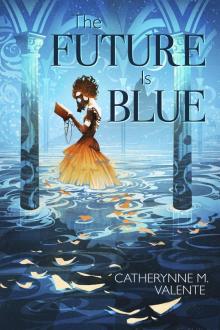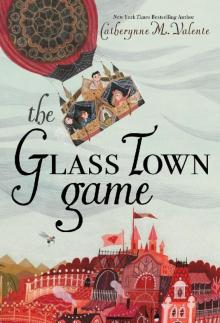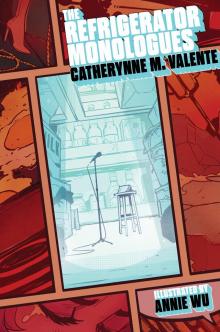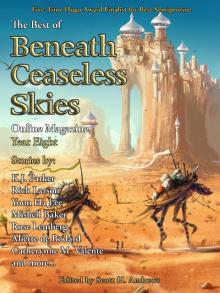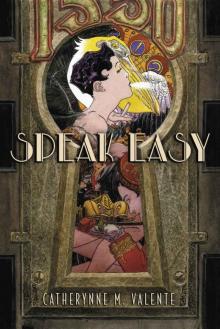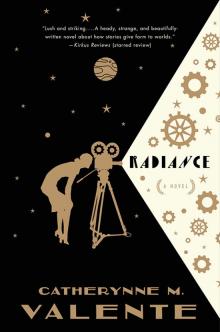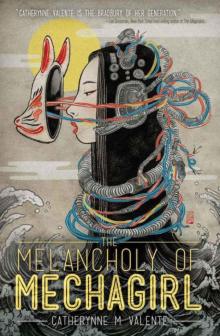


Virtually True, Page 4
Penenberg, Adam L.
He pulls up Aslam’s dossier. Nothing regarding his latest job, just his life as an insurgent and Pakistani military officer, college transcript, credit rating, the usual personal data; no links to defense contractors. As if Aslam had started a new life but hadn’t told anyone. He expands his search. Nothing. True codes his wrist-top to link with his computer and plays back the explosion, trying to isolate the missile on screen. He replays the section, watches Aslam’s eyes round in terror. Slows the scene down. The missile shoots through the air, under a parked car, over a street stall, through a vendor’s legs. True freezes it. He orders the computer to identify the weapon based on aerodynamic tendencies, velocity, size, suspected outer-shell materials, but the computer keeps repeating Insufficient Information.
He lets the video play out again, sees Aslam pull the young girl down with him, and at the point of impact, True instructs his computer to ID the type of explosion. The missile struck Aslam and the girl simultaneously, and as the blast grows into a fiery sunflower, the computer flashes: Compressed TNT. Genetic-seeking guidance system. Manufacturer unknown.
The sight of Aslam and the girl breaking apart makes True uneasy. He paces, summons his courage, and gets back to it. List possible manufacturers.
The computer lists corporations with the know-how to manufacture a weapon of such complexity. 47, blinking at screen’s bottom.
True drums on the side of his keyboard. Then an idea. The computer is listing corporations with access to the technology. This technology—specifically, genetic identification—could have other uses: Delete all corporations that do not engage in weapons manufacture.
Twelve corporations are erased; now 35-35-35-35. “A lot of help that was.” He types: Missile guidance must be programmed with DNA of victim?
The computer responds, Correct.
Access DNA sequence of victim, Aslam Qadar Aziz.
Victim’s DNA not listed in standard medical records.
How did they access Aslam’s DNA? Types: Expand search to all known data banks regarding victim’s DNA sequence.
The computer covers trillions of files in seconds. Burps an answer: No reference to victim’s DNA sequence in any accessible data bank.
Is it possible his new company erased all references of his DNA sequence? But that means Aslam lap-linked with one powerful corporation. So how, then, did the murderer learn his genetic code sequence? True tries a new tack.
Is missile a new type of technology?
Affirmative.
He doesn’t know where to go from here. Takes a stab. Is this weapon manufactured by a Japanese defense contractor?
Insufficient information.
The whole thing could have been an accident. Or maybe someone wanted to kill the girl; although why waste expensive tech on a job like that… unless someone’s debugging it, perhaps.
Judging from present data, is it possible victim’s death was accidental?
Insufficient information.
Could missile have struck incorrect target?
Unlikely.
The more likely explanation is Aslam was the target. True zooms in on the figure of the girl and runs an ID check, but there’s no sight of her anywhere in the datasphere. He himself headed to 24-7 before going to Piña’s arcade to find traces of her DNA, but it was already washed away by a thrust of late-morning rain. His intercom blisters. True lets in an expressmail courier and hands him the envelope and his ADC. The courier debits the cost of expressmail and True adds a healthy tip. Figures on a day to get to New York; after that, a relatively simple analysis—two days max before he hears.
True checks his online messages. There are a dozen, all from WWTV’s local anchor—and his boss—Rush Gelding. True deletes the messages sight unseen.
The sound of the telelink. True picks up, knowing who.
“About freaking time. The reason the company gives you a wrist-top is so I can communicate with you when I need to. Why didn’t you tell me you were meeting a Muslim? I mean, Ailey, an insurgent? Nobody told you they don’t like insurgents here?”
“Aren’t you going to ask how I am?”
“You’re in shit up to your neck. Check out the local news, you’re on it. The network’s not going to like this.”
“Thanks for asking.”
“I won’t let you fuck up my career like you did yours. I had the editorial board e-post your in-house dossier. I didn’t know you were some weird beaker baby, hatched à la carte from some DNA mail-order catalog. Nobody told me what a troublemaker you are, either. Sure you got results, some awards, some solid scoop action. Back when, though. You haven’t made the adjustment to the new corporate order. And you’re old. Fuck up again and after I’m through, the only media-related work you’ll get will be as a DJ at a Singaporean wedding.”
“I’ll be OK after a night’s sleep.”
“We need to talk. Now.”
“About?”
“What do you think?”
“I need to sleep. Goodbye, Rush.”
“Ailey. I mean—”
True flicks off the telelink and Rush is sucked from sight. He doesn’t fear his boss’s pungent mood of late. Before True arrived in Luzonia, Aslam canceled an exclusive interview with Rush. Aslam’s excuse was he didn’t like the promos. Perhaps he was merely twisting an old Arab maxim: The enemy of my friend is my enemy. But cancellation after a blitz of promos is one mondo media sin. It’s been sagging Rush’s career since. The network declined to renegotiate his contract. Plans for a Talk to Rush show were buried. And he’s not getting the perks he did when he was WWTV’s rising star.
Couch-relaxed, True pulls up the news menu. He’s already programmed his system to provide unedited coverage, doesn’t opt for pasteurized news. Even so, he’s asked to choose between news with varying levels of reported violence, news that leans heavily on the sensational or sexy, with or without sports, international, business. True’s fingers skitter over the remote. Fast-forwards through the first few local stories for foreign residents on the government-sponsored TV network. A woman in revolutionary khakis, surrounded by an unfocused backdrop of Nerula at night, reads. All those iron monuments dedicated to revolution, ethnic cleansing, the peace treaties du jour. Practically every time he turns on the local news there’s a segment on ribbon-cutting at a new monument.
He slices through the commercials for ceiling fans (the latest technology), solar-powered air conditioners (a new approach in air-con technology), software (technology answering your needs), car alarms (protecting your investment in technology), impregnable locks (technology protecting your investment), weapons (the latest, greatest technology), and betel nut (tradition takes on technology and wins the battle for your pleasure).
Finally, Bong Bong’s spiky face. True backs up slightly, turns up the sound.
“Aslam Aziz, a Muslim insurgent, was”—Bong Bong makes a throat-slitting noise while running a finger across his Adam’s apple—“trying the escape. He try to pass the secrets of an American journalist, but we are too smart.” Taps his temple, scrunches up his forehead as if thought physically taxes him. “We make instigation of relationship between this Aziz and”—he reads from the oil-stained buffalo burger wrapper—“True Ailey. A journalist of WWTV. We think he makes the trouble with Aziz. Start a war or something.”
Bong Bong exacting revenge for Aslam’s debit card. “Luzonia will not tolerate bad things. Ethnics, Muslims, enemies of the state are not allowed.” Bong Bong mugs for the lens, then titters. “Not allowed. Maybe we deport this journalist. Yes, yes, I think a good idea. Or maybe incarcinate him. Put him in the jail.”
As True’s cheesy passport hologram is flashed under a screaming yellow headline (Enemy of the State), he hears Bong Bong and Pidge’s harmonious giggles.
Why is it, True wonders, I can’t stay out of trouble?
CHAPTER 4
It’s True’s belief that the wars that led to the establishment of Luzonia as an independent nation were a result of Mother Nature’s wrath
. She was tired of being battered by business, her resources robbed, her land raped, her bounty carted off as booty by the earth’s only creature outfitted with a thumb. In a fit of pique over global warming she melted the polar ice caps, raised water tables, flooded coasts, submerged low-lying areas, suffocated crops, washed away cities and towns without a trace, drowned people, animals, and insects. Cities like New York and Tokyo exist precariously, a single disaster from extinction. Other lands, other peoples—Bangladesh, Sri Lanka—accepted their fates stoically, fading into the blue.
Land stripped of trees became stripped of soil, which washed down mountainsides, rubbing away more soil, leaving hillsides bare. Rainclouds floating over nouveau-desert land couldn’t replenish.
Man-made flooding. Man-made drought. Man-made wars. Man-made natural disasters. Because of man-made materialism. But, as in a marriage that turns sour when one partner cannot tolerate the other’s abuse, the earth turned on them. She spat out the man-made toxins that trickled into her, poisoning those who poisoned her; convulsed whenever faced with greater man-made contamination, grinding man-made cities to powder; offered sanctuary to a new array of insects, impregnable to man-made pesticides.
Luzonia’s tale is set before a similar backdrop. Before sun and cold fusion stoked the global industrial juggernaut, the Nihon Oil Company set up exploratory rigs in the peninsula’s largely uncharted interior, where the Tembuocs, a primitive coastal tribe, lived off and with the land. Noise from the rigs drove the fish from shore and the animals into the interior. At first the Tembuocs sabotaged the rigs, but the company immediately repaired them. A few skirmishes later, the company’s representative agreed to restitution: $61—plus free sneakers for all. The company guaranteed the animals and fish would be brought back through the miracle of modern technology. The company would spare no expense, would contact the greatest scientific minds, gain access to the most dazzling technology, airlift prey in by the kiloton if need be.
Now, the Tembuocs, thanks to their satellite dish, knew of the power of Western technology, of wrist-tops and Rice Krispies, hydrogen cars, microzap ovens, massively multiplayer games, and splendor. The Tembuocs were convinced bringing the animals back would be simple. Besides, they wanted those sneakers.
The Tembuocs waited for their prey’s return well beyond the point their shoes were shredded. With starvation clawing and their restitution dwindling to mere copper coins, they lashed out. At the same time Muslims were fleeing flood waters in the north, Catholics in the south were dodging drought. Trees were hacked down for settlements. The degrading environment led to trespassing on tribal land. The Tembuocs attacked: a massacre at a Catholic settlement, a rampage through a Muslim town, leading to swift and bloody reprisals. The Muslims turned to Arab countries for arms, the Catholics to Europe, and other tribes suffering from encroachment by the so-called environmental refugees joined the fight. Soon, calls for separate homelands. Peace initiatives were proposed by the U.N. More arms streamed in.
The result: another post-millennium land cracked into tiny ethnic and cultural granules.
* * *
Bzzz bz bz bzzz bzzz. Bzz bzz.
True wakes, his face caked with sleep. Beads of sunlight fleck the room, filter through pinholes and rips in his curtains as if they can’t wait to prod him awake. True groans. What time is it? Seems like he slipped into dreamland moments before.
He rolls off his futon and pulls on stale pants and a shirt. Puts them on as he goes to squelch the sound. Looks through the hallway monitor and opens the door. “What are you doing here, Rush?”
Rush ducks under True’s arm. “I’ve never seen your place before.” Rush, to True, is little more than a human replica. Plastic pectorals, silicon calf inserts, synthetic biceps, plaster of paris shoulders. The skin on his face is tightened twice a year, pasted with color-inhibitors to produce a glowing visage. His teeth are perfect, white; his gums rosy. And when he turns his head, his whole body moves with it. Literally a sculpted physique.
True rarely meets Rush in person since most of their business is conducted via telelink. It’s disconcerting to see Rush without artifice. Without a backdrop, he’s less self-assured, less real than his TV persona. His eye and skin are lightly blemished, lacking broadcast allure.
Rush looks around, notes the dirty plates slopped by the sink, the unmade futon, clothes strewn-about. “This is a dump. Strictly old tech, Ailey. Mine’s much bigger. New too. Even got a Jacuzzi. You should move to my side of the complex. Lots of empty apartments. Cheap, too.”
True doesn’t tell him the reason he lives here is because Rush lives there. Closes the door.
“It’s after ten. What are you doing in bed? Don’t you have work to do?” Rush doesn’t wait for a response before gravitating to the home entertainment center. “Look at this dinosaur. Must be three, four years old.”
“It came with the place.”
“Yeah, but that doesn’t mean you can’t upgrade. Like total sheesh-kay-bob. Stick a fork in it, it’s done. You should compost this puppy. Mine’s got twice, three times the megs. I bet there’s a lot of software you can’t run.”
“Undoubtedly.”
Since there’s no couch, Rush sits on the edge of True’s futon. “I just came from a meeting with Bong Bong. Did you know he doesn’t like you?”
“I had an inkling.”
“Usually when he’s not happy with our coverage, he gives me the old applesauce enema. You know, lets me know he’s not happy but doesn’t threaten to kill off my manhood. But this time he reamed me. Said if I couldn’t control you, he’d do it for me. And he didn’t forget to mention that neither you nor me would—is it me, or I?”
“I.”
“I would enjoy it. I mean, what the hell is this about you meeting up with a Muslim at 24-7? I was here two years before you got here, and Bong Bong and I got along just swimmingly. No problemas amigo. Now you get here and undermine everything I accomplished.”
“What did you accomplish?” True really wants to know.
“I get along with the locals. I don’t make waves, they don’t cause me trouble. It’s a healthy relationship, and I won’t have you messing it up.”
“Spoken like a true reporter.”
“A true reporter gets ratings. This is now, and today’s motto for the press is cooperation.”
“Maybe you mean the motto is corporation.”
“Shut up, Ailey. Cooperation. I know what I’m saying. Either you work with me, or you’re out of here. Cooperate or you don’t operate.”
“Catchy.”
“Look, Ailey, I’ve come here to tell you, nobody knows more than me what a journo stud you used to be. You were my hero, the way you, uh, you know, all that great stuff you did. But you’re slacking now, and on my beat that’s not copacetic.” Rush picks at his cuticles. “I don’t know what happened with you in New York. Heard you went mental. Got a new hard drive installed. But that doesn’t mean you shouldn’t do your job.”
True thinks of electric snow.
Rush rages on. “Got to tell you. I was not looking forward to you coming over here. Told the home office same-same. I could do more with someone young, hungry. But they sent you. Either you upgrade your job performance or I’m aborting you.” Rush stands, ankles crossed. True’s seen him do the same thing on a newscast—canned concern, he calls it. Luzonians think it’s a sign of decreased fertility. “So, you histoire or you going to get real?”
True shrugs. “Real enough.”
“Your dossier says you were born in a test tube.”
Not exactly a test tube, but True was more planned than born, one of the first to spring from a movement of retirees opting for parenthood past 50. The stigma follows him like a misbehaving shadow. True’s parents ordered him (piece by piece, code by code) from a DNA catalog, scanned electropages for donors with primo characteristics, paid a lab in Italy to mix and match until an embryo was produced and left to grow in an incubator until developed enough to post home.
/> What they ended up with was something, or someone, far different. A random access, but this did not stop American red-bloodeds from torturing True throughout his childhood, blaming him for… what? he wonders. Their shortcomings? True’s shortcomings? Society’s?
Rush rushes on. “What’s it like, growing up a beaker baby?”
True looks out the window to the yellowing sky. Briefly wonders how he can clean the windows, then realizes they are clean. It’s the pollution. True recites: “In the Bottling Room all was harmonious bustle and ordered activity. Whizz and then, click! the lift-hatches flew open; the bottle-liner had only to reach out a hand, take the flap, insert, smooth-side down, and before the lined bottle had had time to travel out of reach along the endless band, whizz, click! another flap of peritoneum had shot up from the depths.”
Rush asks, “What’s that?”
“Huxley. Brave New World.”
“A book?”
“A book.”
“Thought so. Sounds old. When did you memorize that?”
“Seems like I’ve always known it.”
Skeeeee! True’s console alarm. The message, from WWTV: a news emergency in Japan. He tunes in to hear a woman he recognizes as Reiner Jacobi, one of WWTV’s top news anchors, as she heli-floats over Tokyo. The viewing audience is offered flattened neighborhoods, bodies strewn in wreckage, fires screaming toward the heart of the city.
“…at five fifty-five this afternoon a massive earthquake struck Tokyo, a city with fifty million people living within a hundred-mile radius.” Reiner has to shout over the rotor’s soft rat-a-tat-tat. “Information is sketchy, but already estimates put the number dead at more than one million and climbing. Millions more, it’s impossible to say just yet, are homeless. Hospitals report massive casualties. Whole sections have been destroyed.”
Reiner soars over the damaged shoreline as a tidal wave smacks the shore, further decimating Japan’s capital. With a telestrater, she replays the tidal wave, again as a reverse-angle replay. The helicam pans the cockpit, shows Reiner, a pilot, and a large black Labrador, barking and panting. Reiner shoves a biscuit into the dog’s mouth. The shore is shredded, coastal buildings hammered into chunks and washed out to sea along with cars, couches, futons, clothes. True feels he’s a voyeur, peeping into lives he has no right peeping into. The screen breaks into grids displaying different close-up views of the damage.

